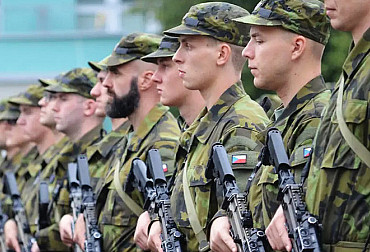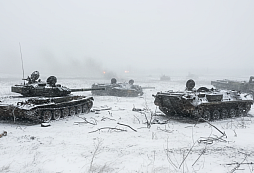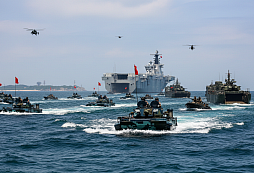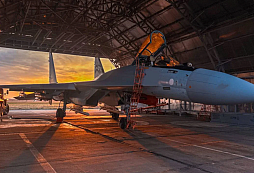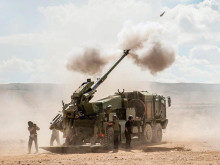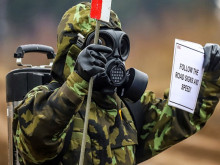God is on the side that has the best artillery
This is how one could translate Napoleon Bonaparte's statement "Dieu est du côté de la meilleure artillerie". Napoleon was, among other things, an artillery general during his career, so he understood the importance of this weapon very well. The artillery still retains its high reputation today, which is confirmed by the experience of the Ukrainian battlefield, among other things.
Fires & Effects Conference
During the recent Fires & Effects fire support conference held in Prague, Brigadier General Sergii Baranov, Chief of the Main Directorate of Artillery, Missiles and UAVs, was heard on video saying that artillery is the most powerful weapon. During the conference, it was also said that a soldier on the battlefield is most likely to be killed either by artillery fire or by drones equipped with shrapnel munitions.
The conference itself was accompanied by a speech by the Chief of the Artillery of the Czech Army, Colonel Marcel Křenek. With his additional information and comments he put into context the essential messages that were heard during the presentations of the speakers from the Czech Armed Forces, universities and companies engaged in research and development, but also production of military equipment. With regard to the high demand for 155 mm calibre artillery ammunition, the presentation by Ivo Strejček, representative of the Czech company STV GROUP, was significant, as he pointed out the importance of security of supply of ammunition for sustainable supply of the Czech Armed Forces. The conflict in Ukraine, according to him, shows how important it is for the Czech Republic that the defence industry is ready to support our army and allies, which is not possible without its own industrial base. In his presentation, Strejček stated, among other things, that timely communication of the state's requirements for the acquisition of specific industrial capabilities is crucial, even when planning individual armament and modernisation projects. Investments in maintaining and building production capabilities are a long-term process and there must be a guarantee that production will be economically rational and sustainable in the long term. In the context of the interoperability of armies in the use of ammunition on individual national weapon systems, Ivo Strejček said that the goal of users and industry should be to promote deeper standardisation at the level of ammunition and its components and weapon systems.
Development of the Artillery of the Czech Armed Forces
In particular, Colonel Křenek's speech brought important information concerning the development of the artillery of the Czech Artillery. The conference also raised questions to which an optimal answer is being sought. One of them is the requirement to increase the range of NATO weapon systems, which includes the 155mm CAESAR 8x8CZ howitzer, which the Czech Army is to receive in 2026-2027. The reason is not only the requirement to destroy enemy targets at a greater depth of their battle formation or rear, but also to operate at a safer distance from the front edge and range of the enemy's artillery assets. Increasing the range beyond the current 40 km limit is always a search for some balance between "cost and performance". Higher range can be achieved by additional technology in the missile body, which logically limits the amount of bursting charge. All this is further compounded by increasing dispersion and the need to correct the descending trajectory of the missile. So basically it is a sort of range-accuracy-tearing triangle that needs to be balanced.
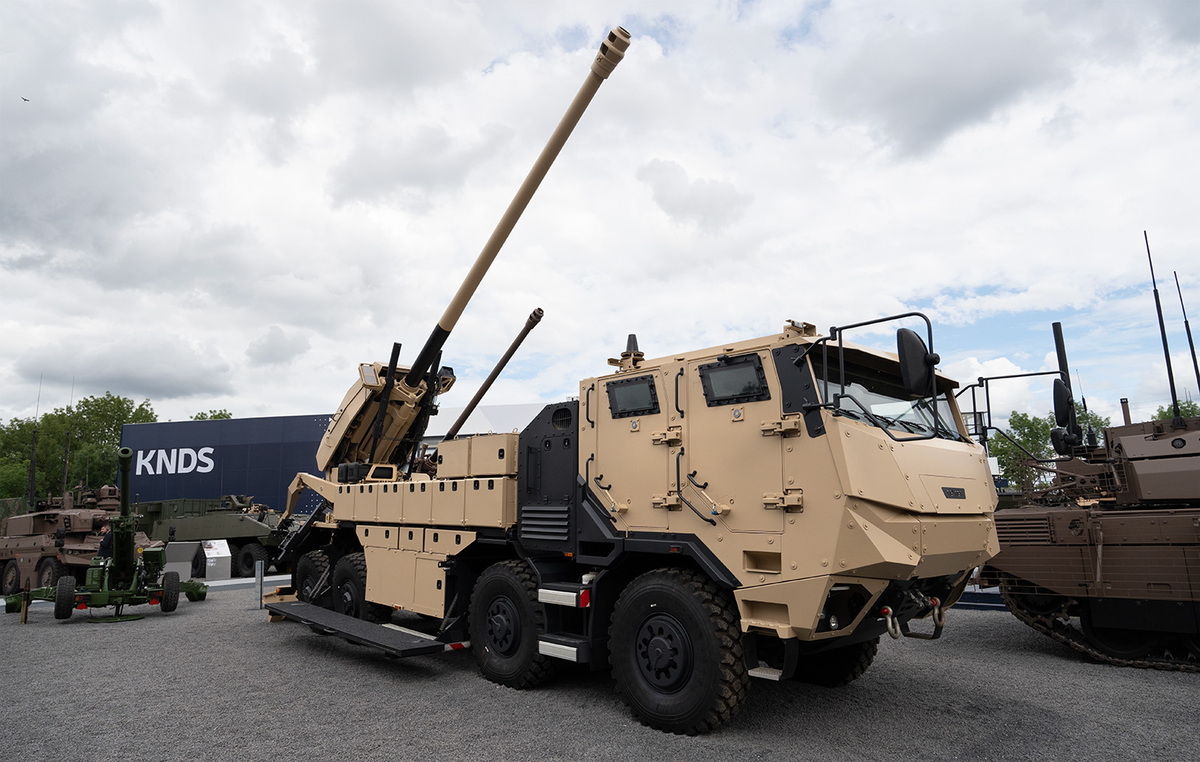
Experience from Ukraine
In the context of the conflict in Ukraine, we often hear that the Western assets provided to the Ukrainian army are characterised by longer range and high accuracy due to precision-guided munitions On the Russian side, the use of thermobaric munitions, which have a higher destructive effect, is mentioned, especially in confined spaces In both cases, the use of rocket launchers, which can also be used for remote minelaying or launching drone swarms For example, the Israeli PULS rocket launcher is capable of firing stand-off munitions that can also be used in a coordinated target area engagement mode at the same time This use of standby munitions also has a longer range and high precision guidance.
However, according to Colonel Křenek, the need for so-called "MASS fires" is not, as many people believe, for rocket launchers, but for a number of barrels that can produce a coordinated effect over time Moreover, according to Colonel Křenek, the development of fire support must be seen in the context of the geopolitical situation.
New technologies and capabilities
As the Chief of Artillery emphasized at the conference, it is now important to build confidence not only in our own capabilities, but also in the new technologies and weapon systems that the artillery will acquire. Newly introduced or developed munitions will also be an important element in the development of the artillery's capabilities. However, a crucial prerequisite for the effective use of artillery will be its integration with other capabilities of the Czech Armed Forces and NATO and EU allies, including integration into multi-domain operations (MDO).
In connection with the procurement of new French 155mm CAESAR self-propelled howitzers for the Czech Armed Forces, Colonel Křenek mentioned that, in comparison to the CAESARs supplied so far, these howitzers for the Czech Armed Forces (on the Tatra T815-7 8×8 chassis) will be equipped with a pulse loader, which will enable faster reloading during sequential firing compared to the hydraulic loader used so far. Further technological improvements could be made in the future to improve the fire control system, to increase the range and associated accuracy of firing by integrating intelligent ammunition or correction igniters, or by using more powerful explosives in artillery ammunition, e.g. thermobaric explosives. It is thermobaric ammunition that we are currently looking to introduce in mortar ammunition, but extending the use of this explosive to 155mm ammunition is not yet considered due to the processes of casting the explosive into the projectile body.
It was also mentioned at the conference that technological developments bring not only new opportunities, but also threats to our own artillery from adversary drones, electronic warfare, artillery radars, sensors or anti-tank mines. The influence of the hostile population in the area of operations cannot be underestimated either.
Currently, the main required capabilities of artillery include mobility, sustainability and destructiveness, where the interconnection and synergy of these capabilities must be recognised. Increased mobility also contributes to unit protection and sustainability, among other things. In the case of artillery, sustainability is supported by the following tactical implications: automation of inventory management, mobile supply units (ammunition handling), energy self-sufficiency, battery management, predictive maintenance or 3D printing. Destructiveness is achieved in artillery by increasing range, higher hit accuracy, innovations in explosive compositions, but also e.g. by generating accurate target information (introduction of advanced software, etc.).
Mobility
In connection with the requirements for greater mobility, some foreign companies are engaged in the development of lightweight guns on various wheeled chassis that complement the required artillery capabilities at a lower cost. These systems will perform tasks primarily where there is a need to be fast, i.e., on time. The price will be reduced ammunition loading (about 60%), lower crew protection or lower calibre (usually 105 mm). Only time will tell to what extent this route will be a possible answer to the current threats.
To meet the requirements for mobility, but also for destructiveness, mortars are also still in use, their simplicity, ease of operation and effectiveness of firing clearly confirming their place in the artillery structure. The effectiveness and prospects of mortar use will then depend on the integration of platforms/chassis to provide not only high mobility and protection, but also ammunition development.
Drones
The Ukrainian artillery uses the so-called "sensor-effector" principle, which actually means the linking of a gun and a drone, to increase its effectiveness on the battlefield. Here, drones help fulfill one of the goals of Ukrainian artillerymen, namely "identify what you want to hunt." This is also important in view of the chosen tactic of the roving gun, which, after firing on targets (identified by drones, among others), moves to another position and quickly disappears to safety. Relatively safe concealment from enemy drones is made possible by so-called cages (scaffolding with mesh) including suitable camouflage. Further protection from drones can be provided by the use of area fogging, the use of timed (fragmentation) munitions, and the ability to intercept and destroy targets in "Near Real Time" (NRT). It was noted at the conference that electromagnetic pulse devices are also currently being developed against drones.
As part of the further development of drones and their deployment, larger drones, called "mothers", will also be used to transport smaller drones over greater distances and then provide relay, navigation and coordination once they are launched. Further opportunities will be provided by the dynamic development of Artificial Intelligence (AI). Thanks to this technology, there is an increasing variety of autonomous solutions on the modern battlefield. AI also allows one pilot (human) to control multiple drones simultaneously (the pilot guides the first machine and the others follow). Similar developments can also be expected in the use of ground vehicles - UGV (Unmanned Ground Vehicle).
3D printing
During the conference, Tomáš Soóky, Managing Director of 3Dwiser, which represents a number of world-renowned manufacturers in the Czech Republic in key segments of additive manufacturing and offers professional 3D printers for industry, also spoke. 3Dwiser is also the largest supplier of 3D technologies in Central Europe. Currently, there is a lot of talk within the military about the use of 3D printing for the production of spare parts, which is already commonly implemented in industry. Additive manufacturing technology itself has made considerable progress and is virtually indispensable in many areas of development and production. However, what is clearly lagging behind in terms of the deployment of this technology in the Czech Army is legislation, i.e. the creation of a legal framework, the creation of databases for the printing of spare parts or the creation of relevant standards.
Extended reality
A representative from QuaternAR then focused his presentation at the conference on the use of linking drones and augmented reality to provide a 3D overview of the battlefield. Specifically, he described the practical deployment of this technical solution within the Israeli-Palestinian conflict. In practice, this involves the creation of a digital twin (3D model) of the operational area of interest using photographs taken from drones, which is regularly updated during subsequent overflights of the battlefield (data updates take place at intervals of approximately 3 to 10 hours). Within this online digital model of the battlefield, special glasses and software can then be used to plan the course of combat operations and respond effectively to changes on the battlefield. Within this battlefield model, the deployed drones can move around the battlefield without GPS guidance and are thus resistant to jamming.
Conclusion
The search for the optimal development of the Czech Armed Forces will continue to be an important and difficult task due to dynamic changes in the security situation and the development of the armed forces, but also due to increasing financial and personnel requirements for the acquisition of new capabilities. The increasingly difficult recruitment of the necessary personnel, not only for artillery specialisations, may be one of the decisive limitations in the development of the Czech Army capabilities and, given the unfavourable demographic development, the situation cannot be expected to change significantly for the better.
The high level of organisation of the conference described above, but above all the focus of the topics of the presentations and their informative contribution, including the very qualified presentations and the accompanying commentary by Colonel Křenek, provided a number of valuable insights that should be further developed.
















